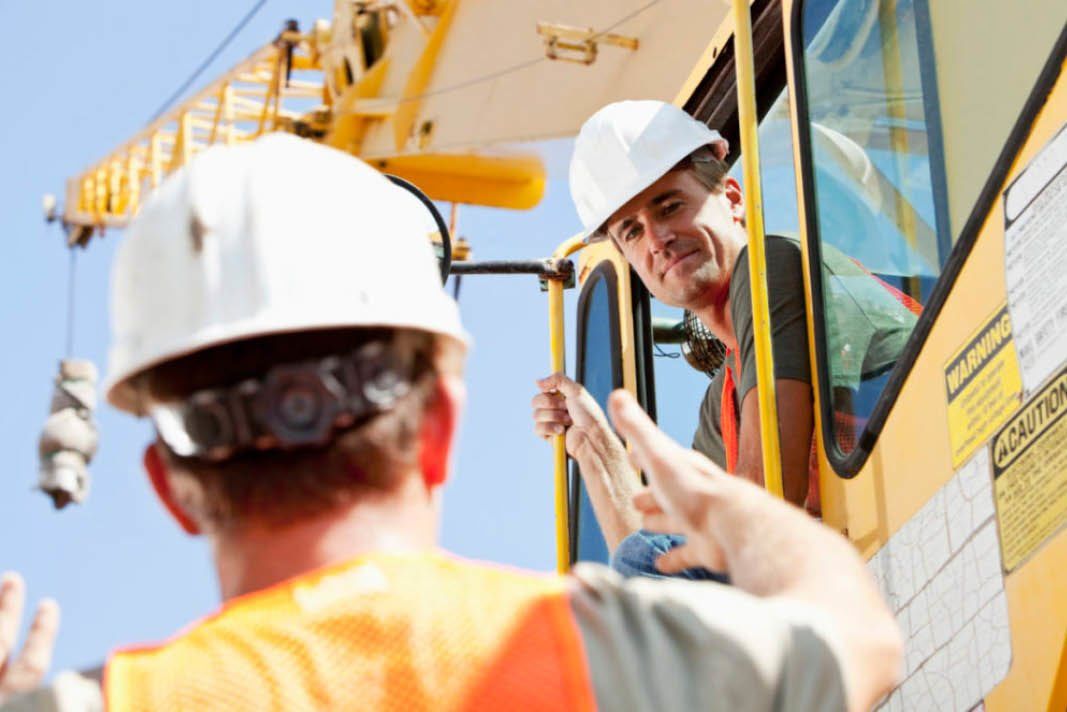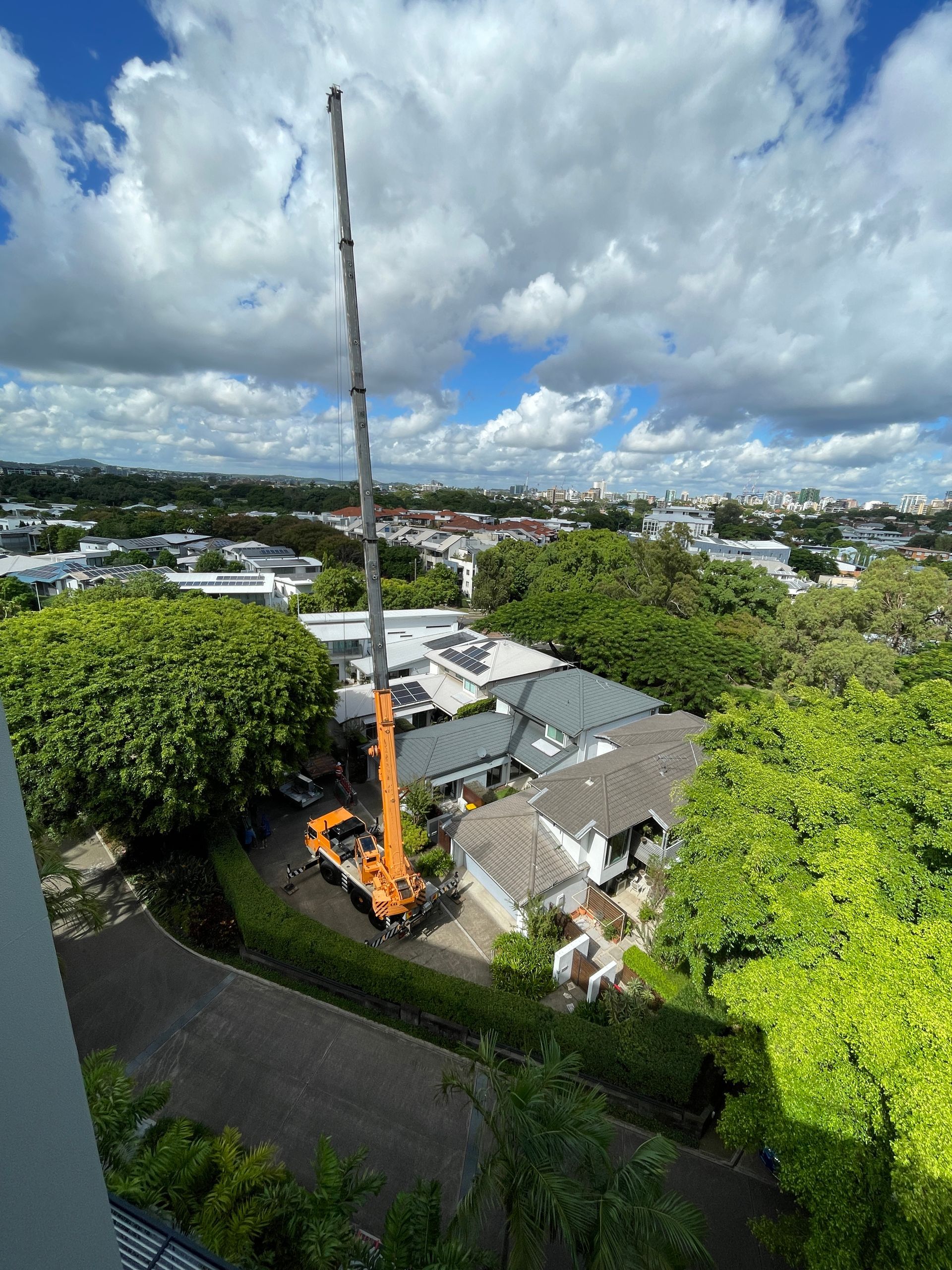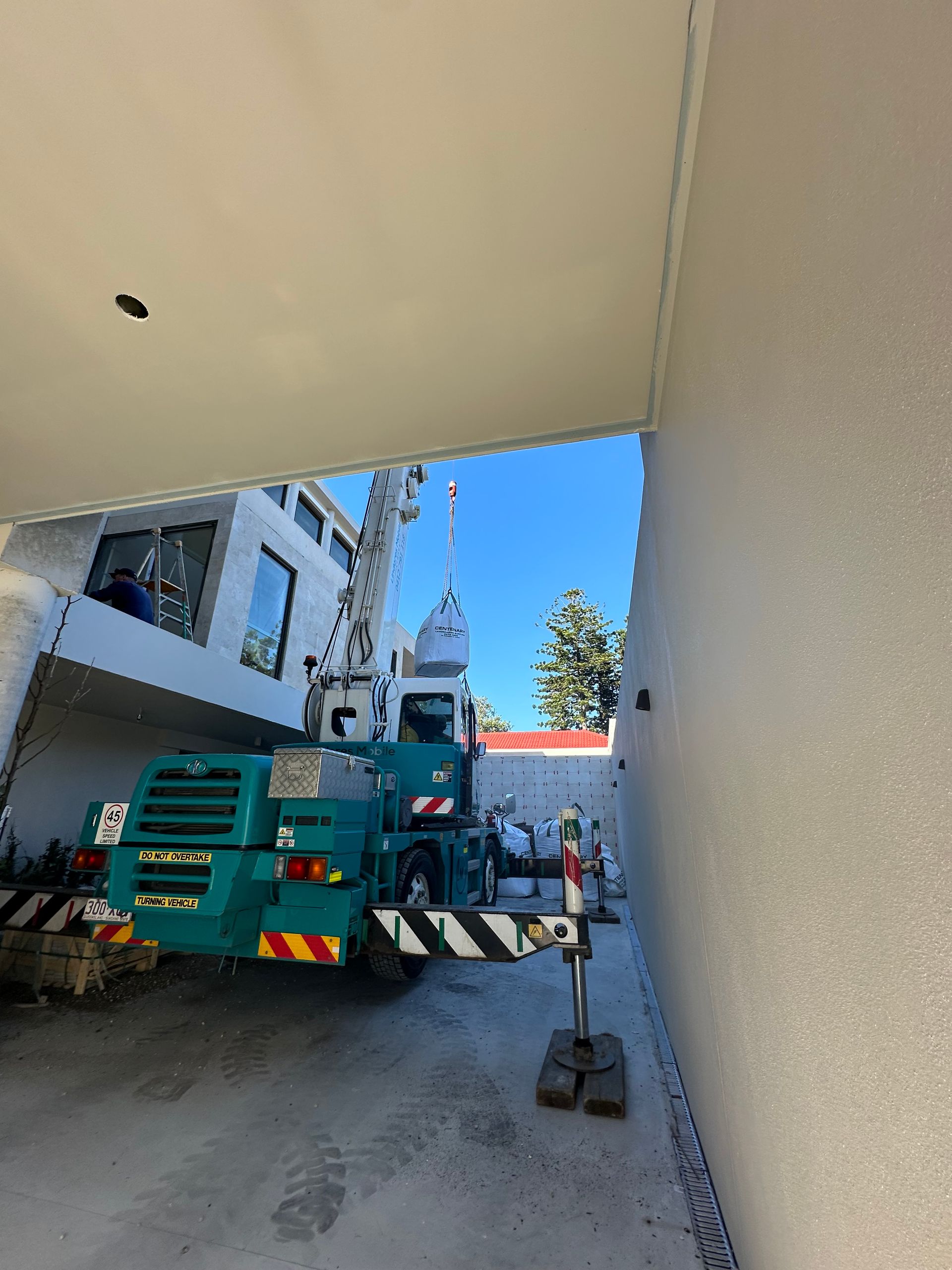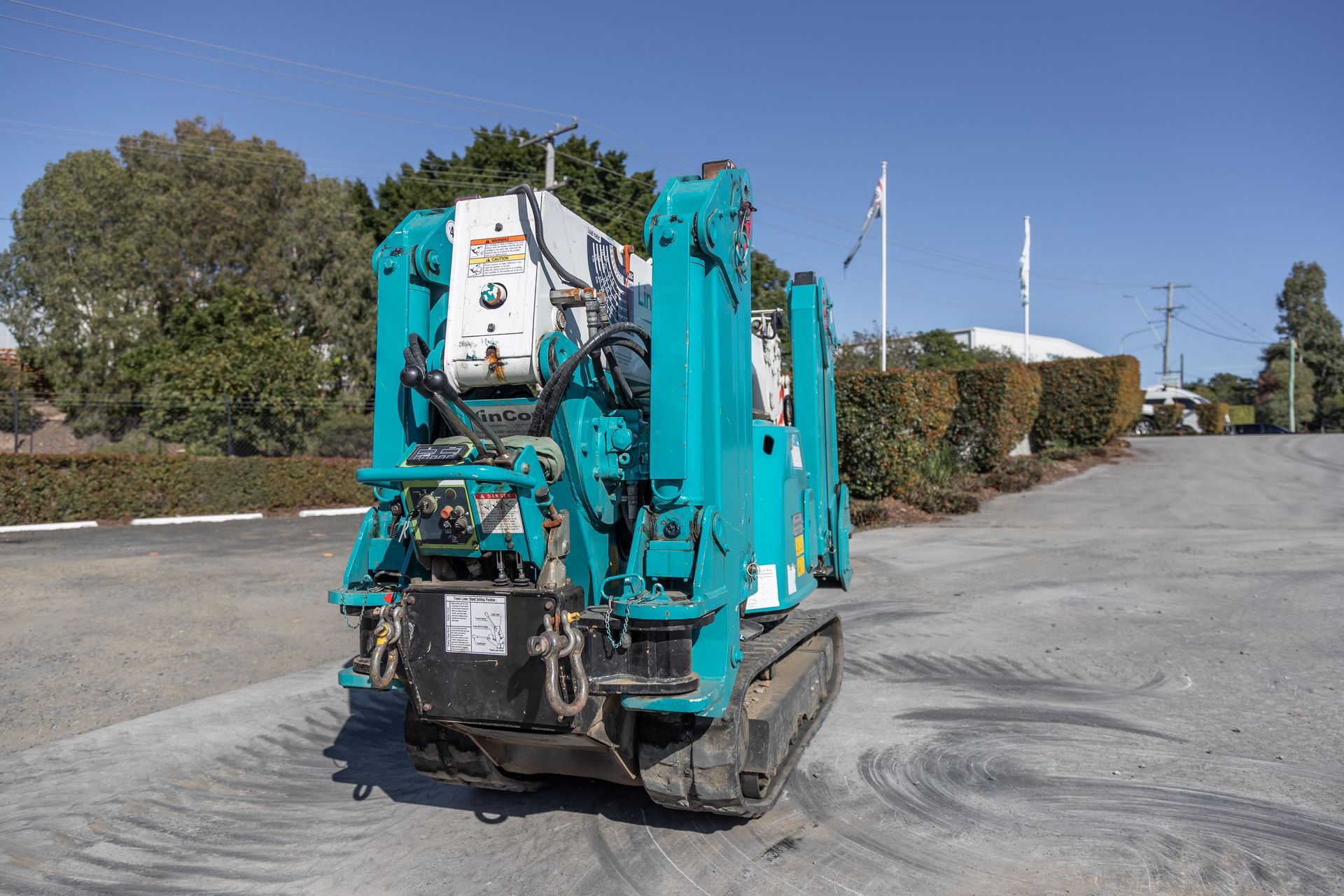Seven Crane Operator Hand Signals

No matter what type of job is on the cards, every crane operator knows that safety should always come first, and often use hand signals as a way to communicate.
Most people know that a crane is a machine that is used to lift and move heavy loads, machines, materials, and goods for a variety of purposes. From construction to manufacturing to shipbuilding and material loading, cranes are used in a wide variety of settings, sectors and projects. While they belong to the same machinery parent group, a mobile crane is an instrumental piece of equipment, mounted on a prime mover and controlled by pulleys and cables - think of a crane, only portable.
However, working with machines of this size and weight capacity requires a serious commitment to safety. A reputable crane operator should have a wide variety of qualifications, a wealth of experience, and most importantly, a thorough understanding of how to operate a crane safely. While there’s many ways to do so, one of the easiest methods includes hand signals - but what do they actually mean?
Understanding Common Crane Operator Hand Signals
Anyone who’s ever worked on a construction site is all too familiar with the fact that there’s often a lot going on. From coordinating multiple contractors, transporting materials and more, the level of noise on these types of job sites can often make it difficult to communicate with your fellow team members. For a crane operator, this is where the simple strategy of using hand signals can be most effective, with some of the most common including the following.
Stop
- Arguably the most critical hand signal used by a crane operator is conveying the need to stop. This is communicated by extending an arm, with the palm of the hand facing flat to the ground or surface.
Raise Boom
- For on site team members ready to signal to the crane operator that the boom needs to be raised, extend an arm outward, with all the fingers in your hand closed in a fist and the thumb extended. Proceed to gesture or point upward.
Lower Boom
- Once the crane operator is finished unloading and it’s safe to lower the boom, the hand signals to do so are simply the opposite of going up. The arm is extended, and the thumb is pointed in a downward gesture.
Swing Boom
- Used to let the crane operator know that the arm of the crane needs to be moved to the left or the right, this is a common gesture when mid task. Simply extend an arm away from your body, and point your index finger in the direction the boom needs to move.
Hoisting Down
- To signal that a load is ready to be loaded with the crane’s hoist, simply extend your arm vertically and point a finger toward the sky. While doing so, make small circles in a clockwise motion with your hand while keeping the index finger upright.
Lower Load
- To communicate to the crane operator that a load needs to be lowered, the process is similar to hoisting it. The point of difference is that although your arm is still extended, this time point a finger towards the ground and make circular movements with the hand.
Travel
- When the whole crane needs to be moved from one point to another on a job site, the primary travel hand signal involves extending your hand out to the side in the direction you need it to go, so that the crane operator can safely move to the next point.
In order to reap the benefits of hiring a mobile crane, the simple fact of the matter is that you need to avoid renting a lemon and to partner with a crane operator that truly values safety. More often than not, a less than ideal mobile hire company could very well cause more headaches than they do solutions, so it’s important for consumers to do their research and partner with a reputable provider - but where do you find one?
Sourcing Crane Hire Solutions With Lindores
Lindores Mobile Cranes (LMC) are a mobile crane and labour hire business that has unequalled experience in the construction industry spanning two generations. In operation since 2007, we’re a family owned business and are also proud owners of Brisbane’s only Humma crane.
Google reviews and even peers within the industry are always a good starting point to ensure that a mobile crane hire company is a reputable business provider. At Lindores, we’re only too happy to show you the feedback from our customers, as it’s something that we’re actually quite proud of.
At LMC, we pride ourselves on knowing what our customers require, and aren’t afraid to think outside of the box with suggestions in order to reduce costs and increase productivity. If you would like to explore your options regarding crane hire in South East Queensland or aren’t quite sure where to start, get in touch with us today.
The Liftout

When people think of crane hire, they often picture towering construction sites or major infrastructure projects. But across Southeast Queensland, an increasing number of residential builders are considering mobile cranes as an essential tool onsite. At Lindores Mobile Cranes , we’ve seen first-hand how reliable crane hire can simplify and speed up residential builds. Smarter Lifting for Modern Home Builds As homes get larger, blocks get smaller, and architectural designs become more complex, the need for precision lifting has never been greater. Roofing materials, structural steel, and even prefabricated walls often need to be placed quickly and safely in hard-to-reach locations. Our mobile cranes, including Mini Crawlers and Frannas , make light work of these tasks. This saves builders time, reduces manual handling, and improves site safety. With our experienced operators on board, there’s no guesswork, no delays, and no unnecessary risk. Explore our mobile crane fleet Tight Access? No Problem. Many of Brisbane’s older suburbs, like Paddington, Spring Hill, and Petrie Terrace, come with tight driveways, steep slopes, and minimal space for materials. That’s where compact mobile cranes and mini crawlers shine. They’re designed to work in confined spaces without compromising lifting capacity or site safety. We regularly help builders lift roofing, frames, pools, and more into hard-to-access sites, without the need for expensive site modifications or lengthy manual labour. Supporting the Sunshine Coast and Gold Coast Residential Market It’s not just Brisbane where we’re seeing demand. Across the Sunshine Coast, with its steep hinterland blocks, and the Gold Coast, where many homes are built close to canals or high-density zones, mobile crane hire is becoming a key part of building smarter, safer homes. Crane Hire That Fits the Residential Build Schedule We know how critical timing is for builders. Delays in lifting can hold up entire stages of the project. That’s why we offer flexible booking options, fast response times, and a commitment to showing up when we say we will. It’s part of the reason why so many residential builders across Southeast Queensland trust Lindores Mobile Cranes for their lifting needs. Ready to Lift Smarter on Your Next Build? No matter the project, our team has the equipment and expertise to help. Contact our team today by calling us on 07 3376 0611 or email lmcops@lmcranes.com.au.

Urban construction across Brisbane’s inner suburbs, like Brisbane City, Fortitude Valley and West End, presents a unique challenge. Limited street access, tight driveways, weight-restricted concrete slabs, and close proximity to neighbouring buildings mean that traditional mobile cranes simply won’t fit. At Lindores Mobile Cranes , we’ve seen how mini crawler cranes are transforming the way construction is carried out on these sites. Compact, precise, and highly mobile, these machines are fast becoming essential for projects across Queensland . Rethinking Lifting for Urban Environments In city and suburban projects, space is at a premium. Construction teams often deal with narrow laneways, busy streets, or strict local council rules that make large-scale crane operations unfeasible. In some cases, access is so restricted that conventional lifting equipment can’t get anywhere near the job site. That’s where mini crawler cranes come in. Built specifically for tight and complex environments, these machines allow builders to lift heavy materials safely and efficiently, without the need for wide access or extensive setup areas. See our full fleet of mobile and mini cranes. Compact Size, Serious Capability Despite their size, mini crawler cranes don’t compromise on performance. Designed to operate in confined spaces, they’re able to move through narrow driveways and even fit inside buildings if required. Their rubber tracks reduce surface pressure, making them safe for use on rooftops or polished concrete slabs, and their zero tail-swing allows for safe manoeuvring in environments with little margin for error. These features make them ideal for everything from steel erection and glass installation to HVAC placement and residential renovations. We’ve supported projects as varied as boutique homes in New Farm and shopfront fit outs in Surfers Paradise , proving how versatile these compact machines really are. Designed for the Modern Job Site Mini crawler cranes are an increasingly popular choice for residential builds, renovations, and even commercial fit outs across Queensland. Their small footprint and fast setup time mean less downtime, lower costs, and fewer headaches when working in restricted-access environments. Ready to Lift Smarter in Tight Spaces? At Lindores Mobile Cranes , we’ve helped countless clients across Brisbane , the Gold Coast , and South East Queensland navigate complex job sites with ease. Our team can advise you on the right crane for your lift, organise pre-lift planning, and provide experienced operators who understand the ins and outs of working in urban environments. Contact our team today by calling 07 3376 0611 or email lmcorps@lmcranes.com.au.

